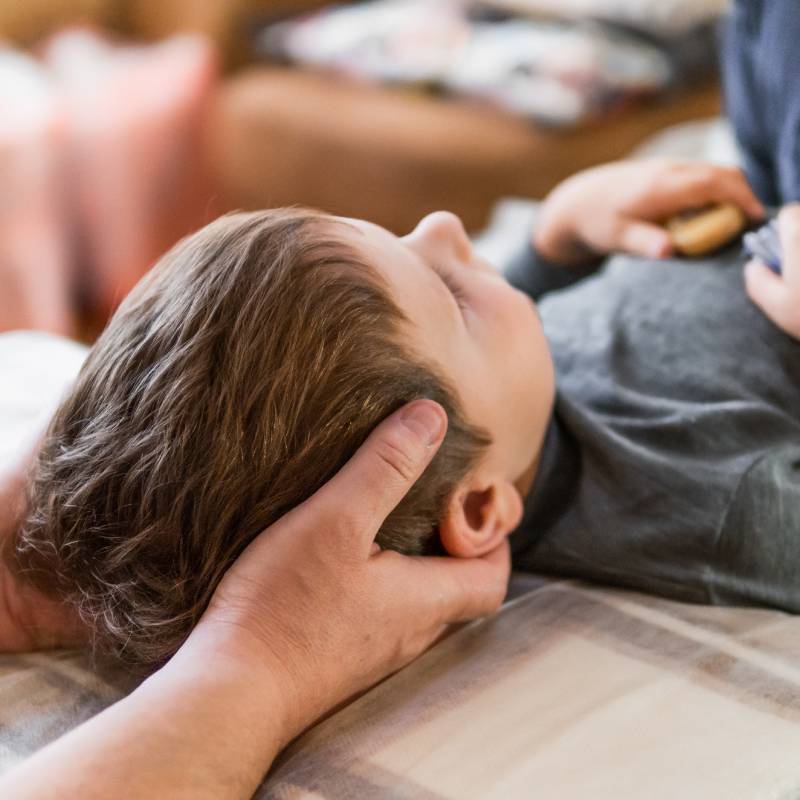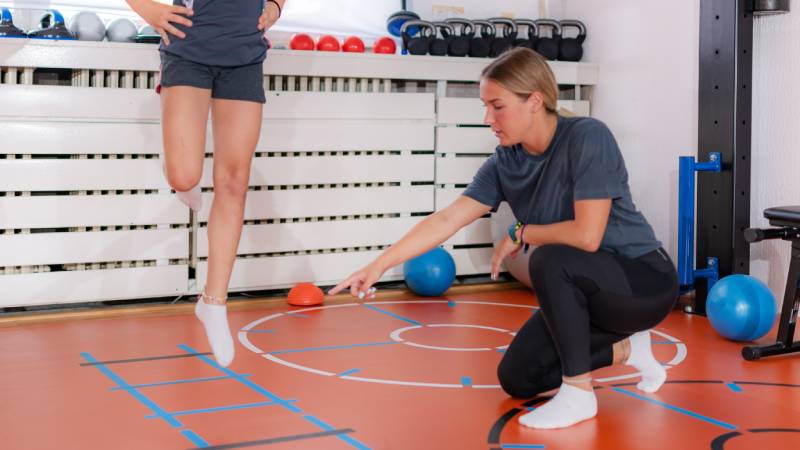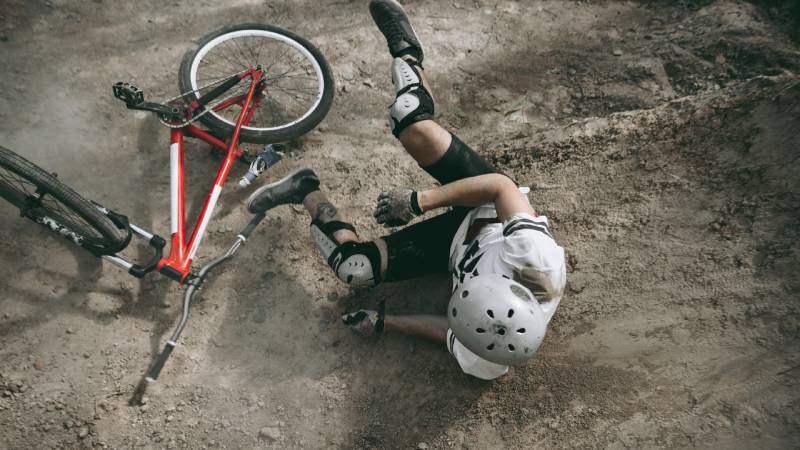Concussion treatment: Rest and rehabilitation

Concussions, caused by impact to the head, are minor brain injuries but pose a serious public health problem in the sporting world. Proper treatment is therefore essential to ensure optimal recovery and a safe return to sporting activities.
Rest following a concussion
Physical and cognitive rest is an essential part of concussion treatment. The brain needs time to rest and heal, and too much physical or mental activity can delay recovery or worsen symptoms.
Physical rest
- Suspension of physical activity: It is generally recommended to suspend all physical activity, including sports, exercise and strenuous physical activity, until symptoms have disappeared. The duration of rest may vary according to the severity of the concussion and the doctor’s recommendations.
- Gradual resumption of activities: Resumption of activities must be gradual and authorized by a physician or qualified healthcare professional. A progressive resumption protocol must be established, taking into account the severity of the concussion, persistent symptoms and type of activity.
- Signs of non-readiness for recovery: It is important to monitor symptoms during progressive recovery. If symptoms reappear or worsen, the athlete should immediately cease activity and consult a physician.
Cognitive rest
- Limiting tiring mental activity: It’s also important to limit tiring mental activity, such as studying, computer work or video games, during the acute phase of recovery [1].
- Relaxing activities: Cognitive rest can include relaxing activities such as music, time spent in nature or relaxation techniques like meditation or yoga.
- Stress management: Stress can worsen concussion symptoms. It’s important to find ways to manage stress during the recovery phase, such as spending time with loved ones, practicing relaxing activities or seeking psychological support if necessary.
Post-concussion rehabilitation
Once concussion symptoms have subsided and the athlete has received medical clearance, progressive rehabilitation may be required to help restore affected physical and cognitive functions. Rehabilitation must be individualized according to the athlete’s specific needs and identified deficits.
Vestibular exercises
Vestibular exercises aim to improve balance and coordination, which can be disrupted by a concussion [2]. These exercises can help reduce feelings of dizziness, instability and disorientation.
- Sample exercises:
-
- Eye tracking with head still
- Head movements (head nods, rotations)
- Balance exercises on a stable or unstable surface
- Hand-eye coordination exercises
Cognitive exercises
Cognitive exercises aim to improve cognitive functions that may be affected by a concussion, such as memory, concentration, speed of information processing and problem solving [3].
- Sample exercises:
-
- Memory games
- Attention and concentration exercises
- Puzzles and logic games
- Problem-solving exercises
- Computerized cognitive training
Fitness exercises
Once cognitive and vestibular symptoms have resolved, progressive fitness training can be initiated to restore strength, endurance and overall physical condition.
- Gradual progression: Resumption of exercise should be gradual and adapted to the athlete’s pre-concussion fitness level.
- Symptom monitoring: It is important to monitor symptoms during the return to exercise. If symptoms reappear or worsen, the athlete should stop exercising immediately and consult a physician.
Effective Strategies for Managing Concussion Symptoms
In addition to rest and rehabilitation, it’s important to manage concussion symptoms to promote a comfortable recovery and optimize the healing process.
Medication:
- Analgesics: Over-the-counter drugs such as paracetamol or ibuprofen can be used to relieve headaches and pain. It is important to follow dosage instructions and not exceed recommended doses.
- Anti-nausea drugs: Anti-nausea drugs may be prescribed by a physician to relieve nausea and vomiting.
- Sleeping pills: In some cases, sleeping pills may be prescribed to help regulate sleep if concussion disrupts the athlete’s sleep cycles.
Lifestyle changes:
- Sleep: Adequate sleep (typically 7-8 hours per night for adults) is crucial for brain healing. It’s important to establish a regular sleep routine and create a sleep-friendly environment.
- Diet: A healthy, balanced diet rich in fruits, vegetables, proteins and whole grains can provide the nutrients needed for brain healing. It’s important to stay hydrated by drinking enough water throughout the day.
- Avoid harmful substances: Avoid caffeine, alcohol and tobacco during the recovery phase. These substances can aggravate concussion symptoms and disrupt sleep.
Back to work after a brain injury
Returning to activity after a concussion should be gradual and planned in collaboration with a physician or qualified healthcare professional. A carefully designed return-to-activity protocol should be established with several factors in mind:
- Severity of concussion: More severe concussions may require a longer period of rest and more intensive rehabilitation before returning to activity.
- Persistent symptoms: The presence of persistent symptoms, such as headaches, dizziness or cognitive impairment, may delay return to activity.
- Type of activity: The type of activity practised by the athlete must be taken into account. High-impact sports with a high risk of collision will require a more cautious progression than low-impact activities.
Post-concussion return-to-work protocol
A typical return-to-activity protocol follows a gradual progression, gradually increasing the duration, intensity, complexity and contact of the activity [3]. Each stage of the protocol must be symptom-free before moving on to the next.
Phase 1: Light conditioning exercises and non-contact strengthening activities.
Phase 2: Progressive agility and coordination exercises.
Phase 3: Specific low-intensity sports training.
Phase 4: Gradual return to full training and non-contact games.
Phase 5: Return to full-contact games, after medical clearance.
Towards Optimal Recovery from Concussion
Concussion treatment involves rest, rehabilitation, symptom management and a gradual return to activity. By following appropriate treatment guidelines and taking a cautious approach, concussed athletes can safely return to activity.
Please note that we are not medical professionals, and that it is important to consult a physician if you suspect a concussion. The doctor’s recommendations take precedence over the advice presented in this article.
Sources :
[1] Clinique Axone. (s.d). Rééducation Vestibulaire. Consulté à l’URL suivante : https://www.cliniqueaxone.ca/approches-de-traitement/reeducation-vestibulaire/
[2] Réadaptation suite à une commotion : les exercices, un traitement puissant!. Kinik, Consulté à l’URL suivante : https://kinik.ca/readaptation-suite-a-une-commotion-les-exercices-un-traitement-puissant/
[3] Ellemberg, D. (2017).Protocole de gestion des commotions cérébrales . Institut des commotions cérébrales. Consulté à l’URL suivante : http://institutcommotions.com/wp-content/uploads/2016/11/Protocole-2e-%C3%A9dition-2016-1.pdf
Don't miss our new ultimate guide to concussion in sport!
Karl Demers

On the same subject
Explores the different phases of concussion management, from the initial recognition of symptoms on the field to post-traumatic rehabilitation.
While recognizing symptoms on the field is essential for identifying potentially concussed athletes, initial assessments do not always lead to a […]
Although generally not fatal, undiagnosed or inadequately treated concussions can lead to serious long-term complications, such as permanent […]


